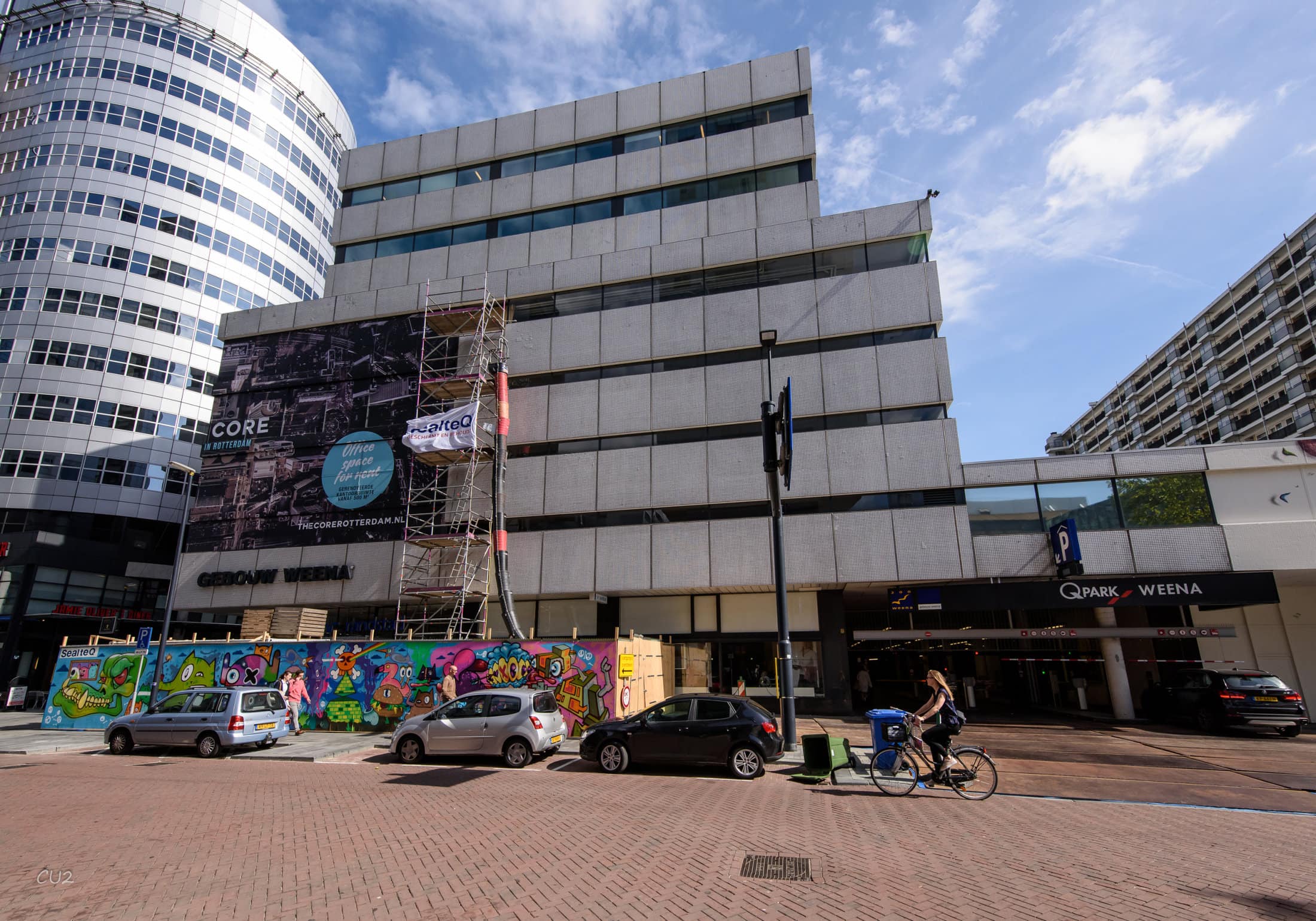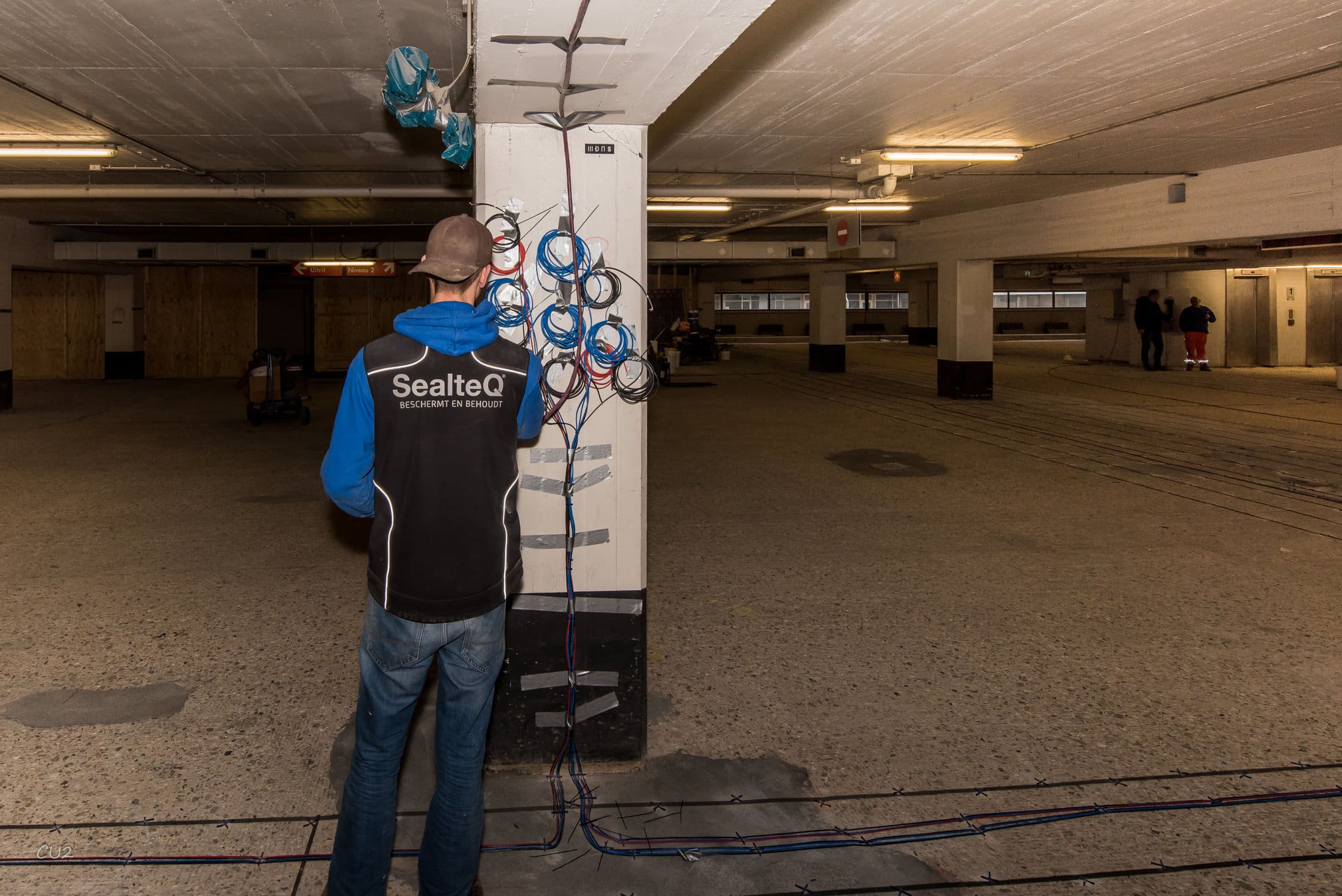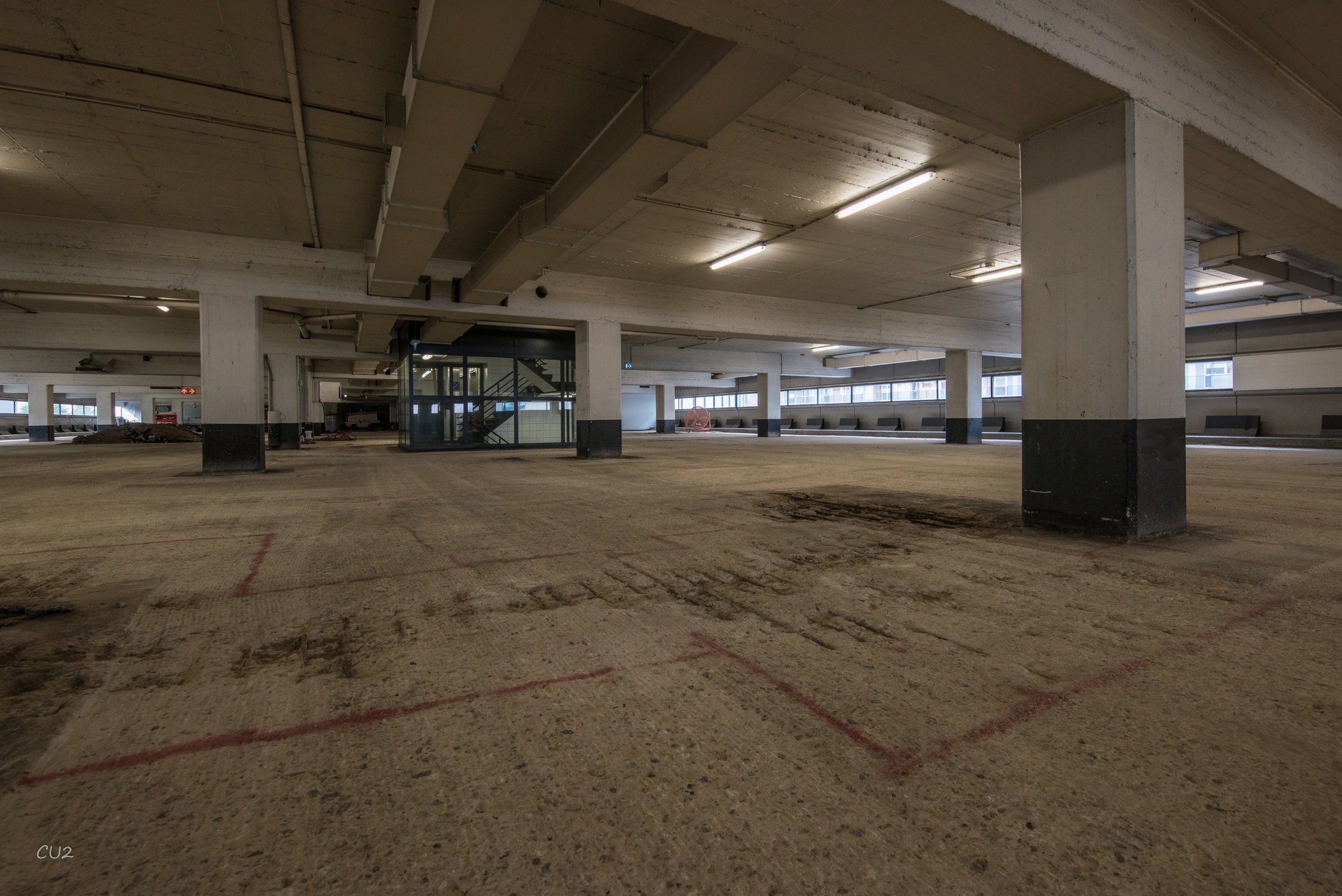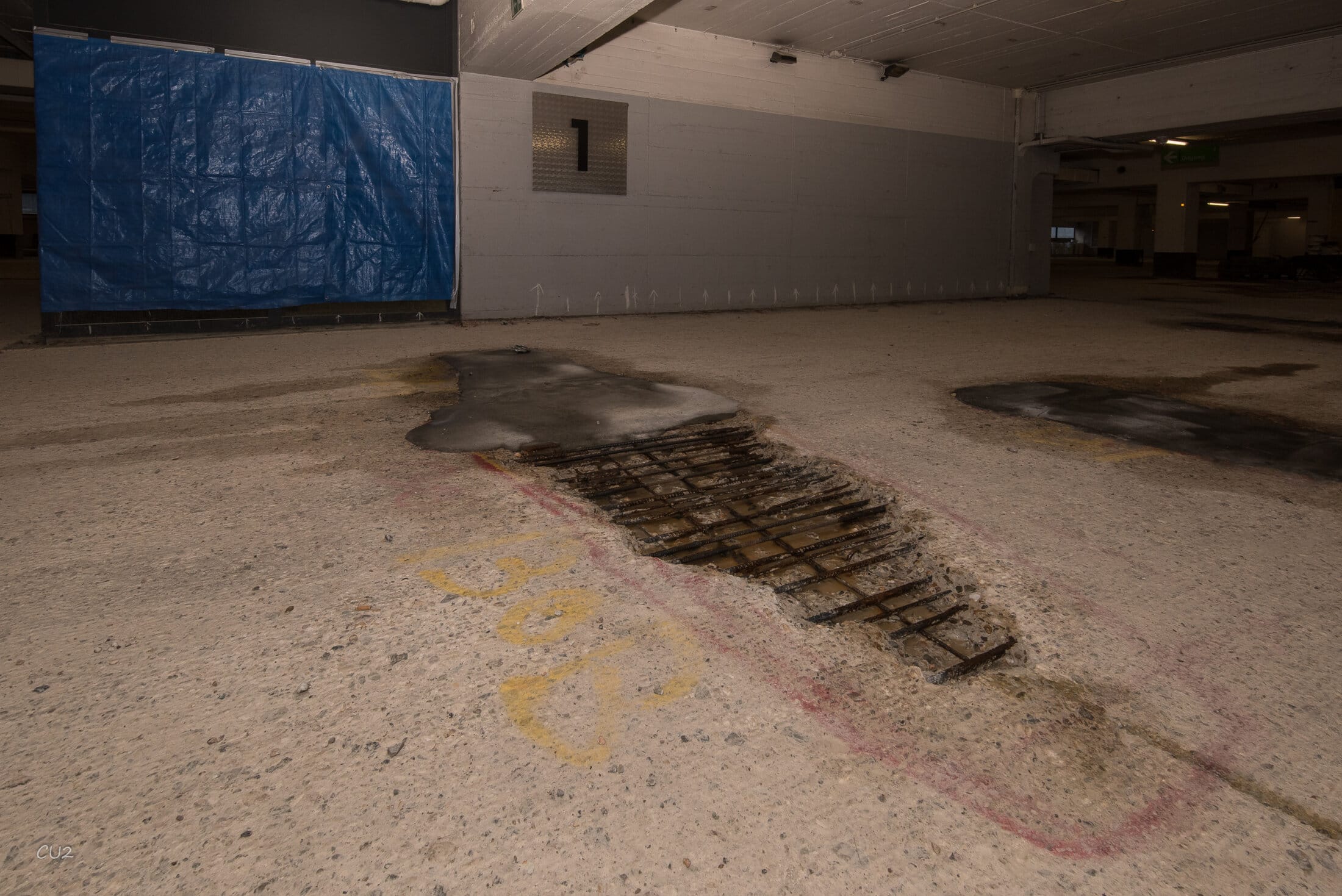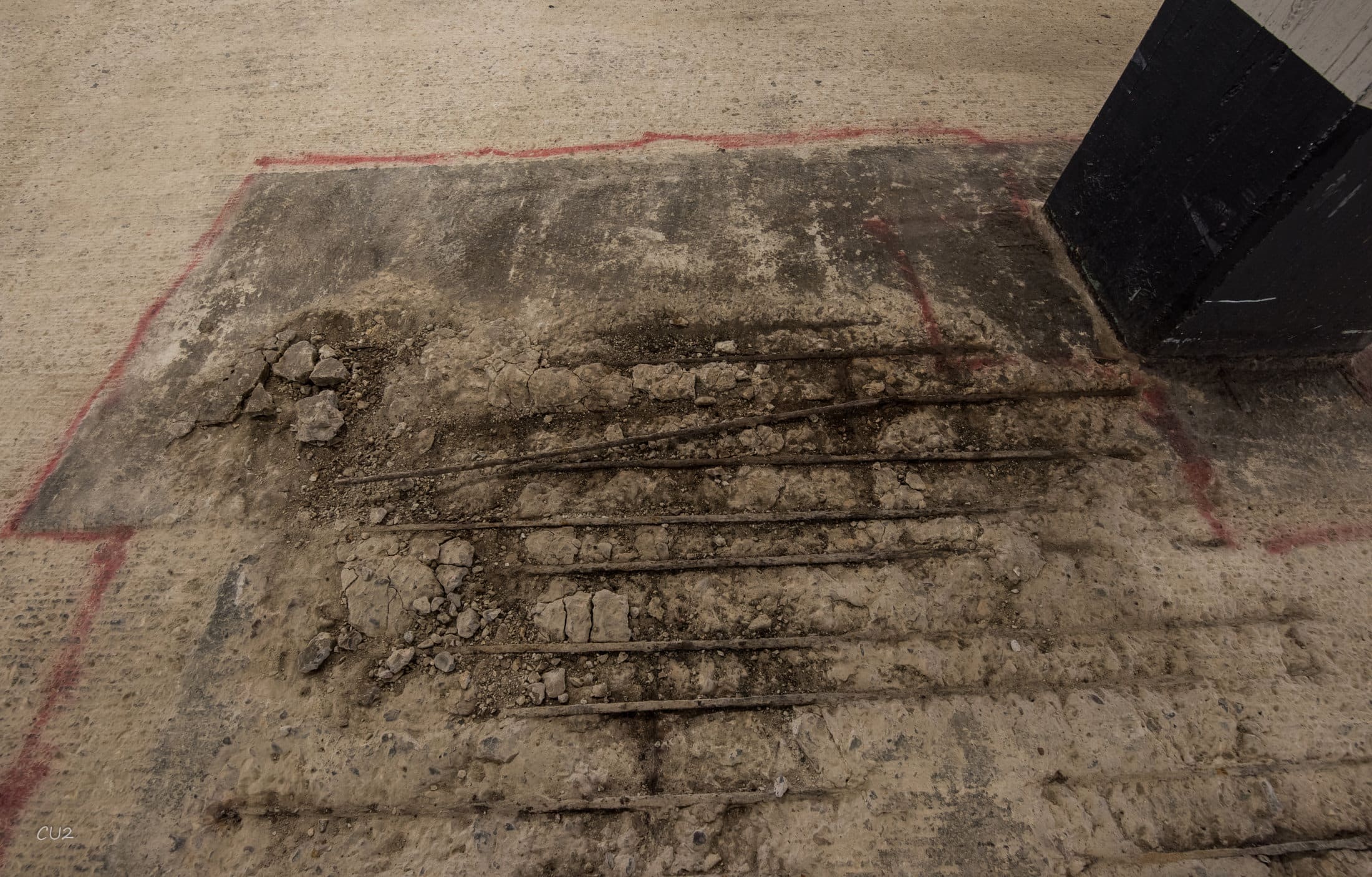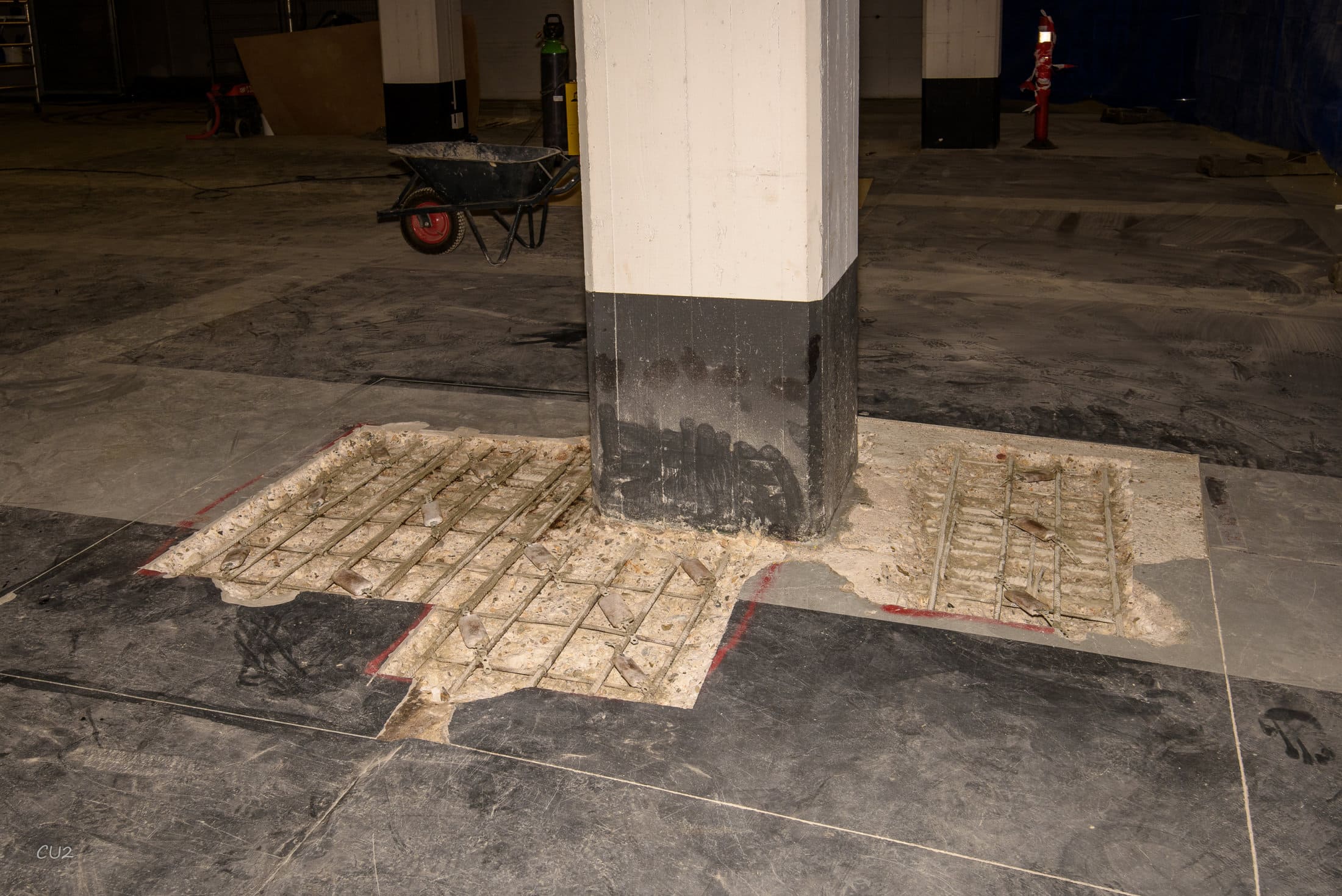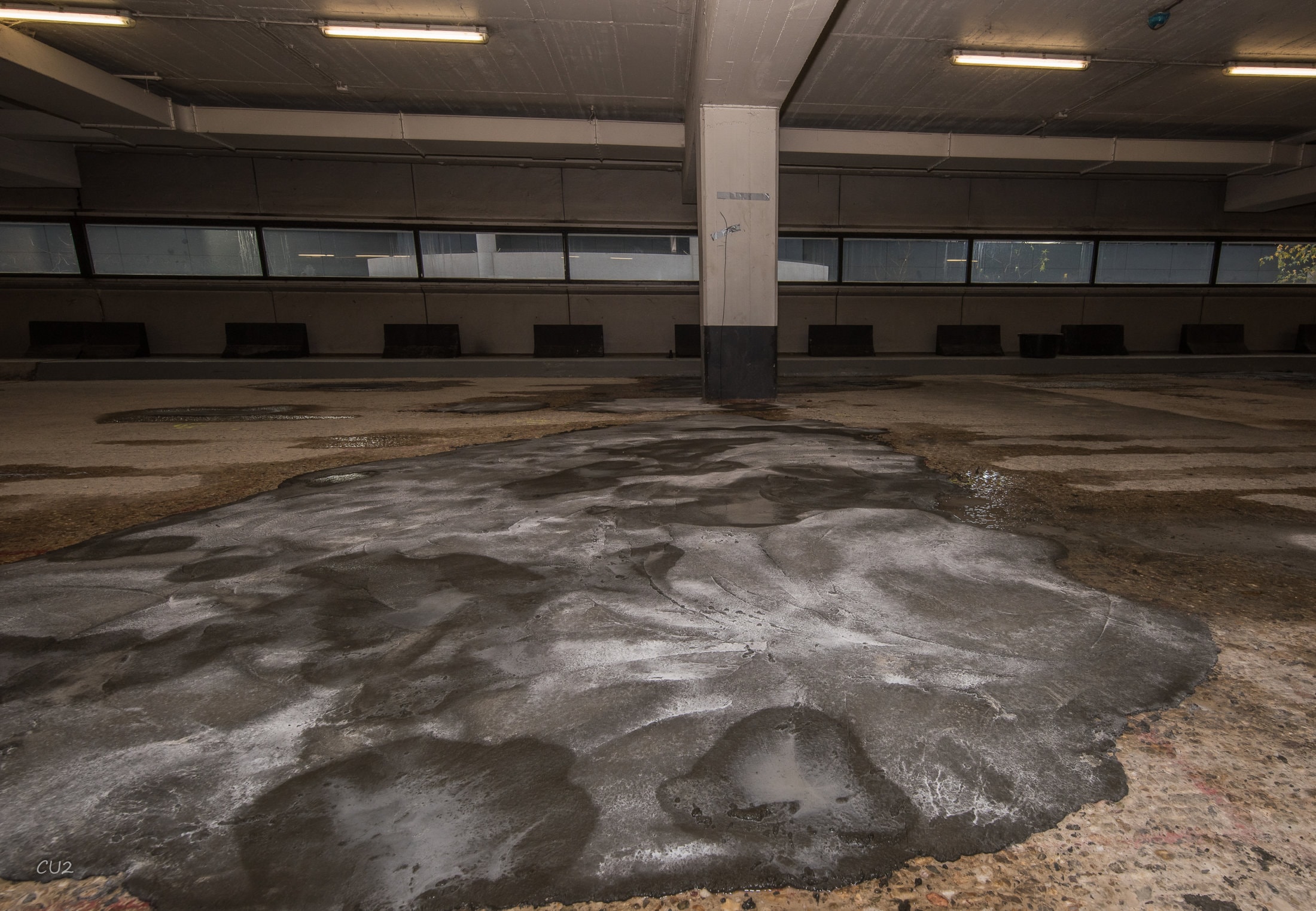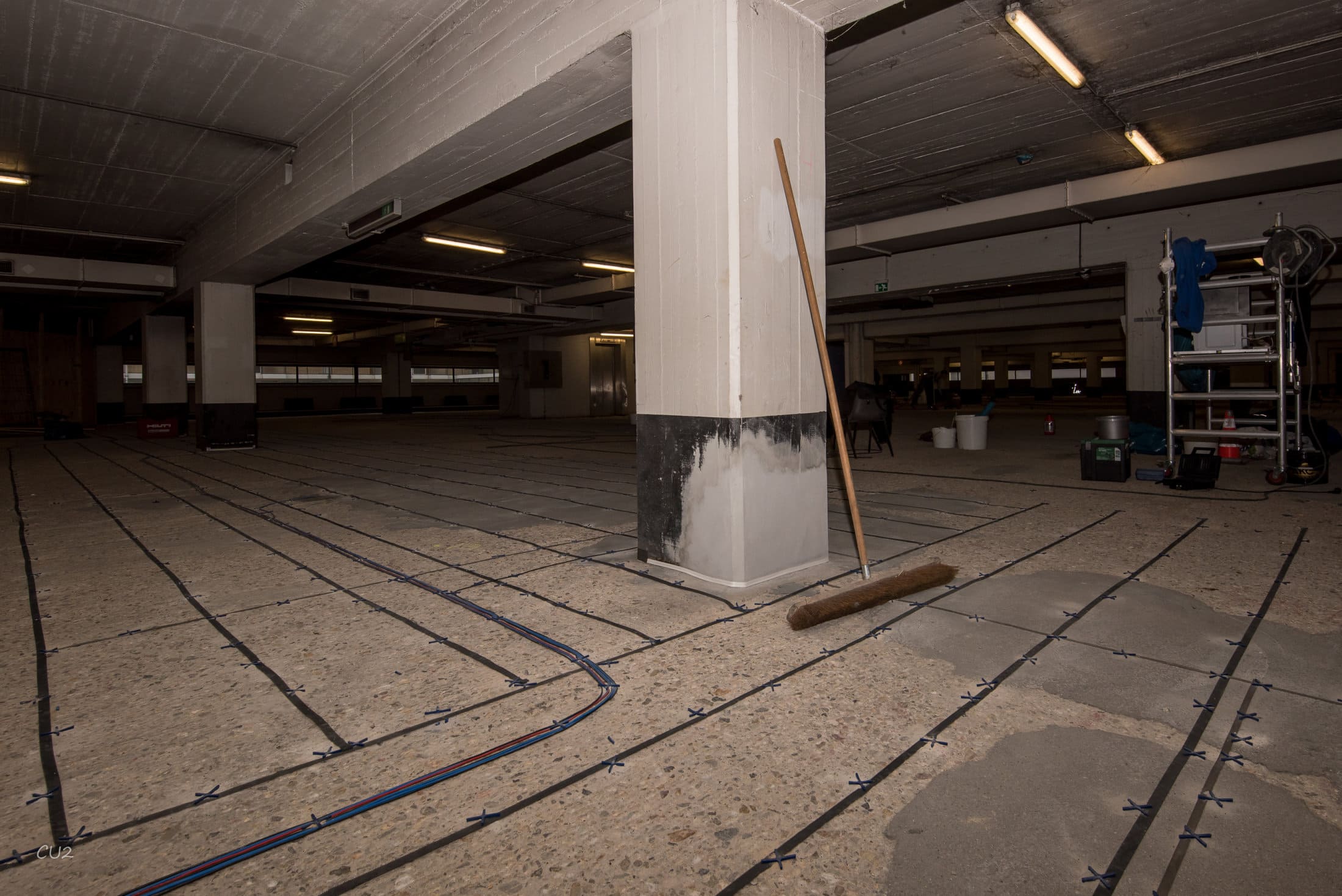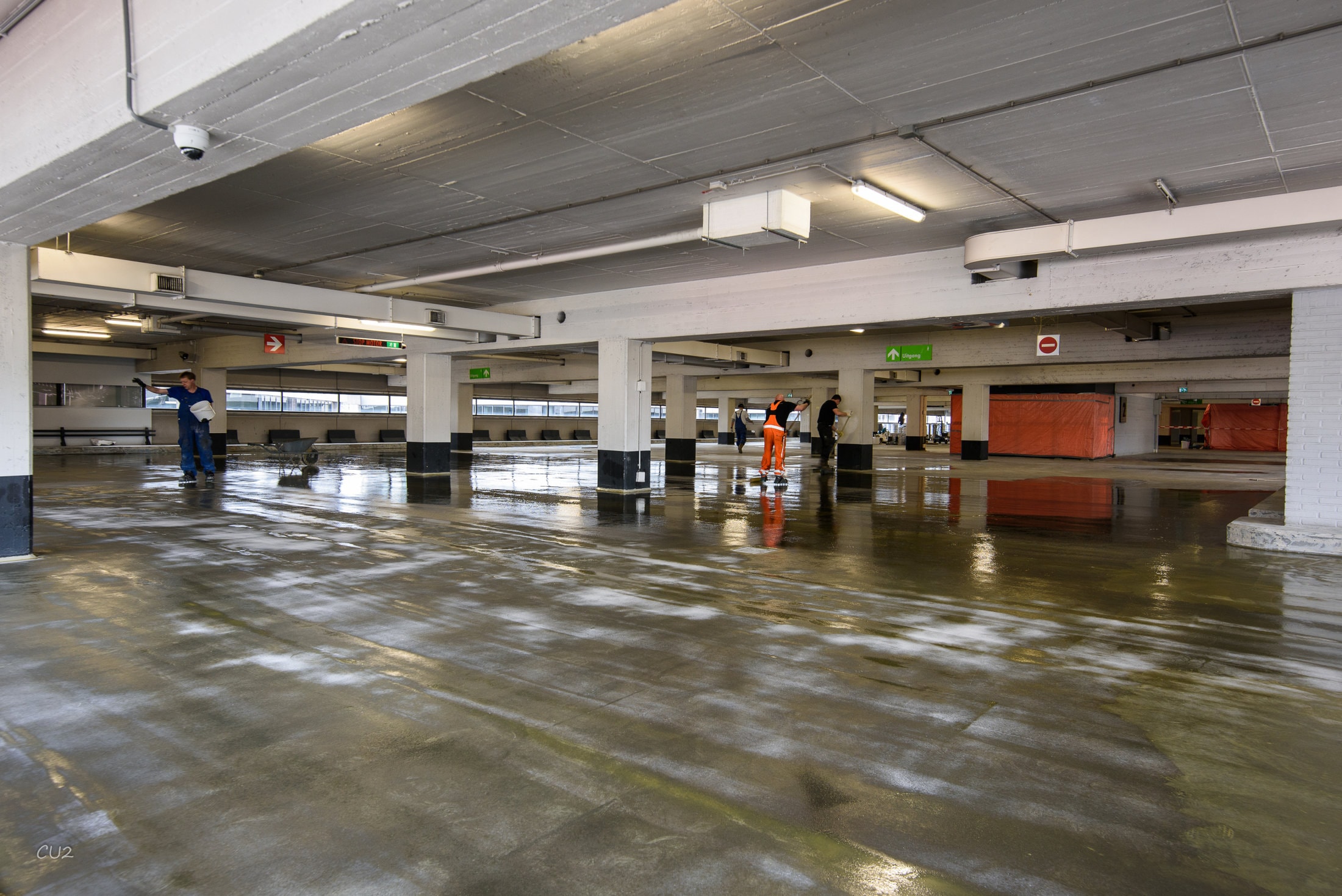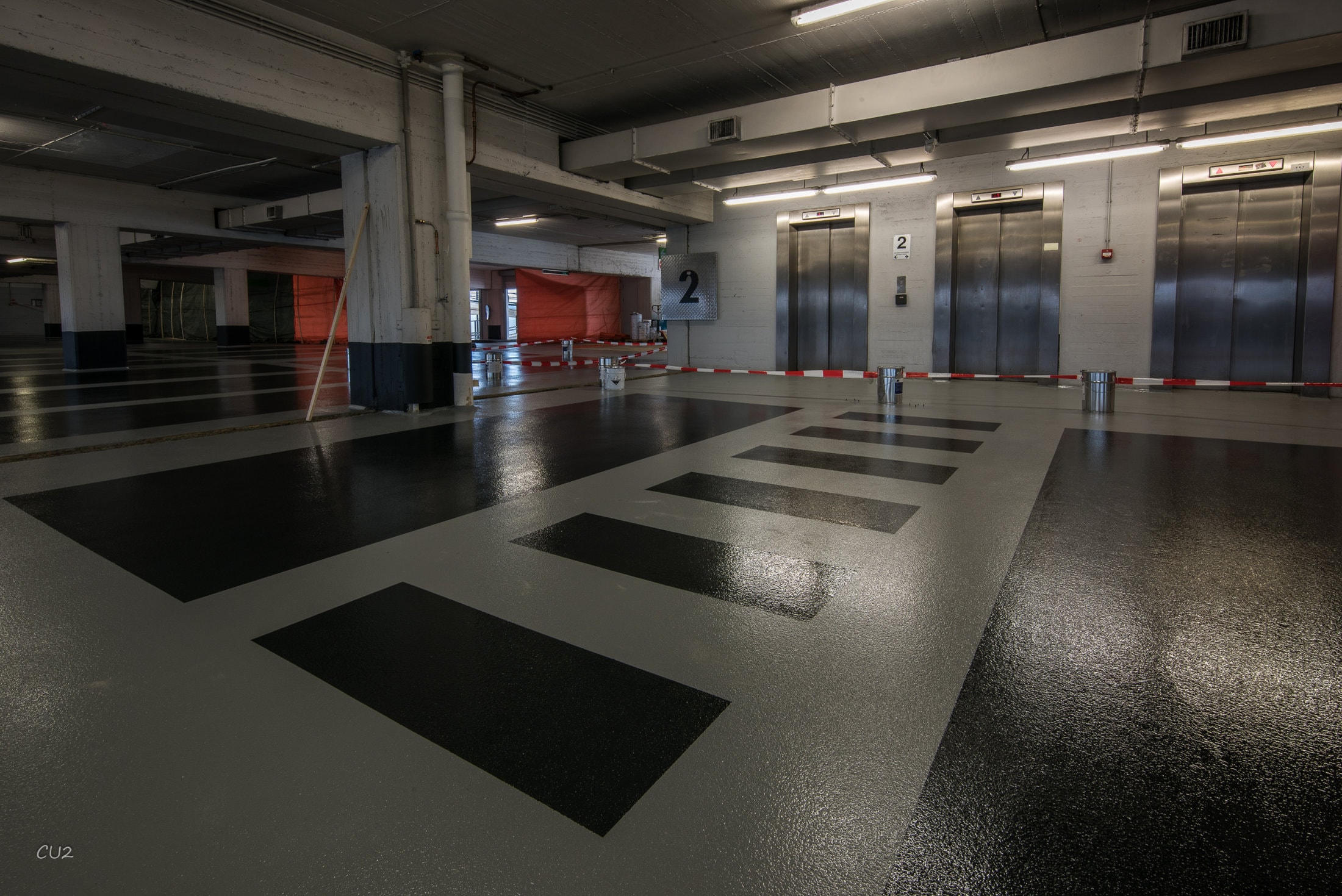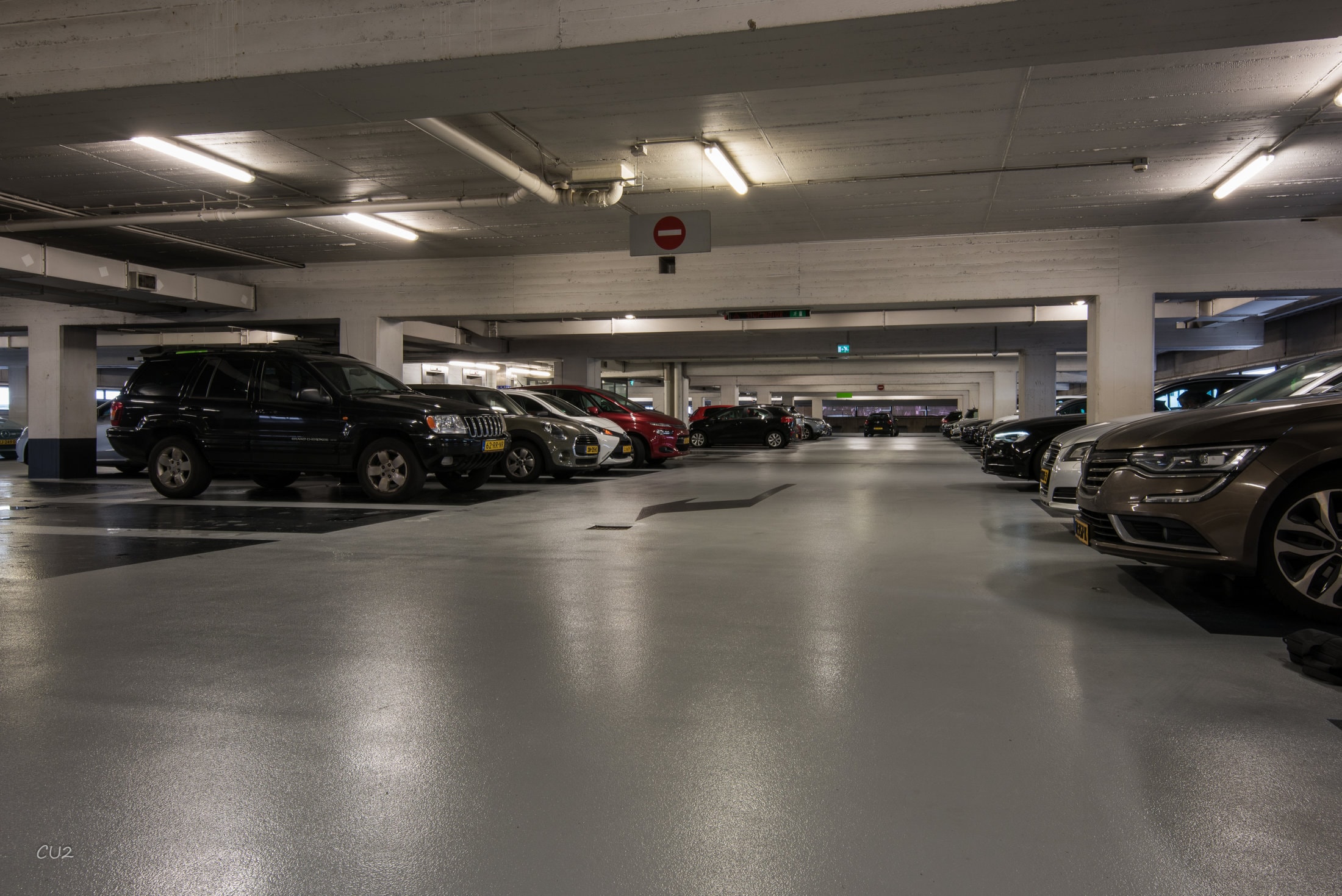At the end of March 2019, SealteQ completed the extensive renovation of the Weena parking garage in the center of Rotterdam and delivered it to manager Jones Lang LaSalle and operator Q-Park. An intensive renovation, which started at the end of August 2018, was thus successfully completed. The Weena parking garage, built in 1968, has a capacity of 541 parking spaces and consists of a basement level and 4 floors above a substructure with offices and commercial spaces. After numerous reports of leaks and damage in the floors, it became clear that the Weena parking garage was due for a thorough renovation.
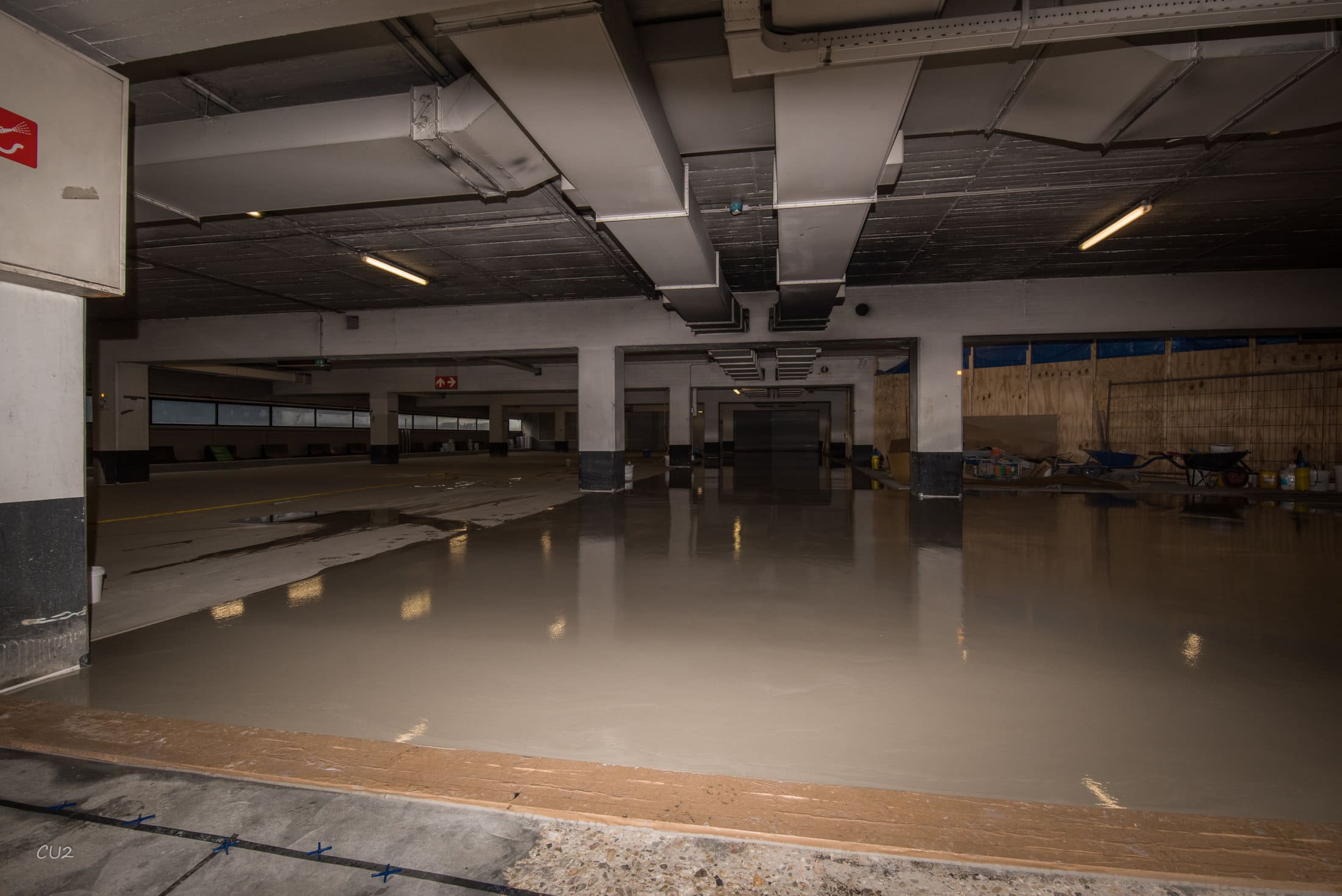
Unique renovation of parking garage Weena in Rotterdam
Preliminary Investigation
The preliminary investigation, prior to the tender process, revealed that the floors showed extensive concrete damage. This damage was mainly located at cracks that had formed in the relatively thin floors (160 mm thick), directly adjacent to the beams of the monolithic concrete structure. Due to the requirement to maintain parking capacity as much as possible and to optimize work speed, work began simultaneously on the 1
Pitting Corrosion from De-icing Salts
Based on the data from the preliminary investigation, SealteQ had already advised using galvanic cathodic protection to prevent ongoing corrosion of the reinforcement. Traditional concrete repair does not stop chloride-induced corrosion. The penetrated de-icing salts (chlorides from driven-in brine) cause pitting corrosion in the reinforcement, which can pose a structural hazard. After remediation of the damage, it became clear that the extent of damage on each floor had more than doubled. On floors 2 through 4, where the damage was still relatively concentrated at the cracks, local repair was possible. There, galvanic anodes welded to the exposed reinforcement could still control corrosion. On floor 1, the damage was so extensive that local anode installation could no longer provide relief and additional measures became necessary.
After the mastic asphalt was removed from floor 1, the severity of the structural damage became truly apparent. Based on the then-visible damage, this was already four times the established baseline assumptions. The main reinforcement had almost completely disappeared due to corrosion at many locations. To assess the invisible damage as well, SealteQ conducted an extensive investigation. Through potential measurements, among other methods, all corrosion activity of the reinforcement was measured. Using the potential maps, the corrosion activity was precisely localized.
Cathodic protection
Based on the information obtained from this investigation, SealteQ designed a cathodic protection system with impressed current based on titanium strip anodes. Due to the large area to be protected, galvanic protection was no longer an efficient solution. Using the data from the potential maps, very efficient protection was achieved at locations where active reinforcement corrosion was occurring in the floor.
First, the damage was repaired with newly welded reinforcement bars. Subsequently, titanium strips were installed on the floor surface. The 1st floor was divided into three zones. This was necessary for targeted control and distribution of the CP system. Through the installation of titanium current distributors with anode contacts and making sufficient cathode connections to the steel to be protected and made continuous, very efficient and effective protection of the reinforcement steel was achieved. The CP system is controlled remotely and will be inspected four times per year. If necessary, the system can be adjusted to effectively and durably protect the reinforcement steel against corrosion.
Floor Finish
After application of the CP system, the entire floor was overlaid with a high-quality cement-based and highly conductive leveling mortar with a minimum thickness of 15 mm. This layer was important not only for a level substrate, but also for adequate conduction of the protective current from the CP system to the reinforcement. On the sufficiently cured cement-based substrate, after dust-free blasting, a heavy 4-layer crack-bridging resin flooring system was applied, standardized according to DIN Os-11a. Through the combination of an elastic membrane layer and a heavy-duty cast-broadcast layer, a durable flooring system was installed that, in addition to high mechanical durability, also prevents new crack formation from resulting in penetration of de-icing salts. A wear-resistant top layer was then applied to the heavy system layers. Subsequently, all parking spaces, symbols, and markings were applied to the floor in the same synthetic system.
This high-quality synthetic parking deck system was installed on the various floors in the corporate colors of operator Q-Park. The system will contribute to years of trouble-free use of this characteristic garage in the heart of Rotterdam. A project where SealteQ specialists combined extensive knowledge and expertise to complete the project to the full satisfaction of the clients.
Related markets
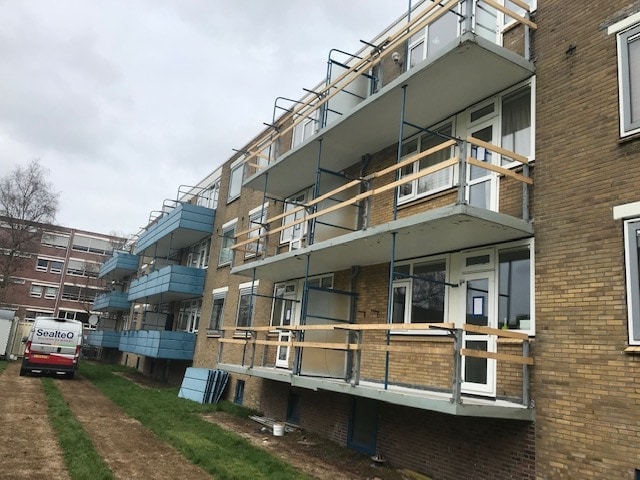
View the next project
Life extension maintenance Vve building Couperusstraat
Last week, SealteQ began Phase 2 of the life-extending maintenance measures at the VvE building on Couperusstraat in Groningen. Last year (Phase 1), twenty-four balconies on the rear side of the building were already structurally reinforced with carbon fiber reinforcement. Phase 2 will consist of a four-week period during which SealteQ will carry out various works related to concrete and steel preservation. These activities will include coating the balconies, railings, ceiling, and roof edge.


